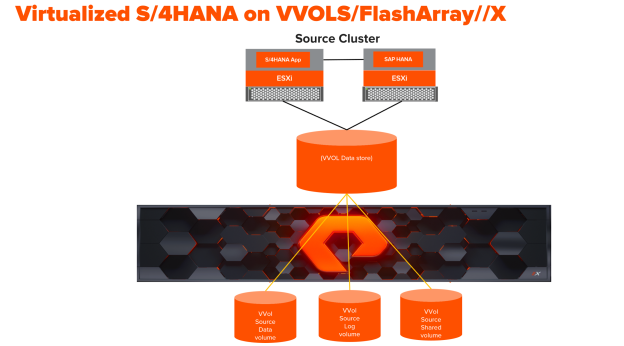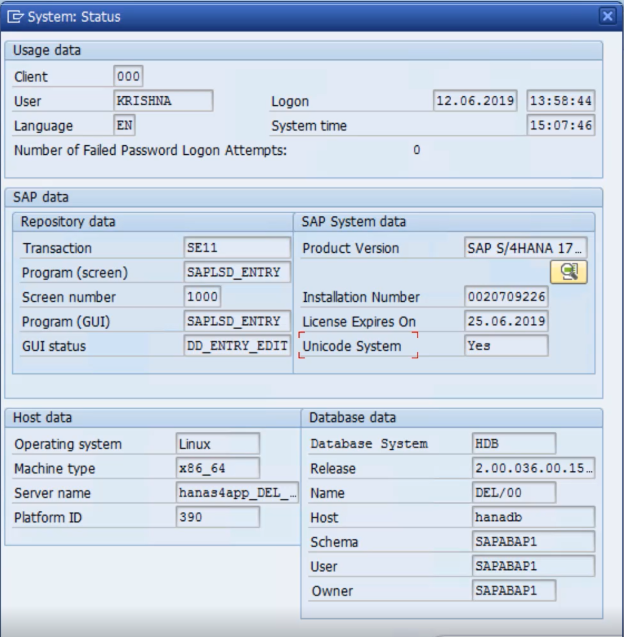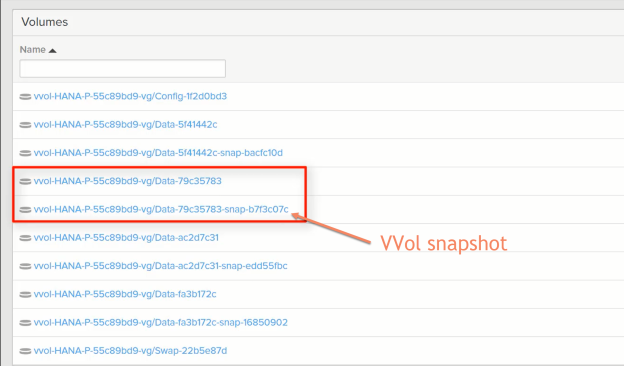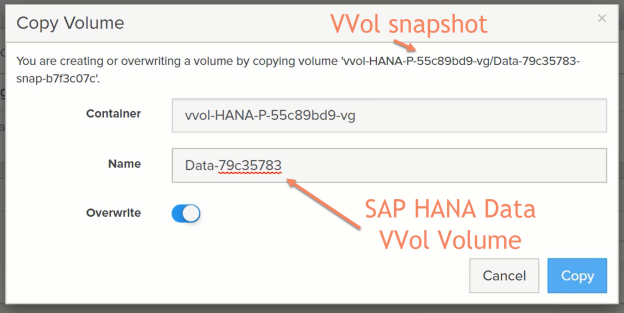Backup of S/4HANA system is very fast because of FlashArray VVol deployment and snapshots. Here is the brief description and benefits provided by FlashArray snapshots and VMware VVols.
Pure storage FlashArray//X snapshots are instantaneous and initially do not consume any additional disk space which accelerates the entire backup process.
VVols makes the whole backup and recovery process easy and efficient because:
- VVols are granular (FlashArray volume per VVol) and are not heavy like VMFS datastore. With VVols we can have a separate FlashArray volume for data, log, etc.
- Virtual machine snapshots can be taken directly from vSphere client and are handled by the FlashArray.
- vSphere administrator does not need to interact directly with FlashArray in order to snap or restore the virtual machine
- Original volumes (VVols) can be restored directly from vSphere client
- Taking and restoring FlashArray based snapshots is extremely simplified and nearly instantaneous.
- Performance monitoring of Virtual Machine’s volumes’ is available directly on the array.
BecauseVMFS datastores usually contain multiple VMs/disks, making array-based snapshots less useful since there is no single virtual machine granularity. The VMFS snapshot and applying the snapshots back to the original disk is a very complex process.
In order to show this backup is recovery demo, I have S/4HANA system deployed on VVols and FlashArray//X. It is a distributed system S/4HANA 1709 on SAP HANA 2.0 SP3 version.

Operating system: SUSE Linux 12 sp3 for SAP applications
SAP HANA version: SAP HANA 2.0 sp3
S/4HANA version: S/4HANA 1709
Schema name: SAPABAP1
SAP HANA Data and Log volumes: XFS File system
vCenter Server: 6.7.0.31000
Here is the System status of the S/4HANA system used in the demo.

The following steps are performed in the demo video to backup of S/4HANA system:
- Z table has been used as a reference for this demo. We take SAP HANA backup when this table has 20 records.
2. We take an application-consistent snapshot of the SAP HANA system. We put SAP HANA in create snapshot mode and then freeze the data volume’s file system to take an application-consistent snapshot.
3. We can take the snapshot from the vSphere client itself as shown below.

This creates a VVol snapshot volume has shown below in the FlashArray//X indicated by -snap- in the volume’s name.

4. Then we unfreeze the file system and close the SAP HANA backup mode. Please refer to my other blog which explains the whole process in detail for backing up an SAP HANA 2.0 multi-tenant system.
Backup of SAP HANA 2.0 MDC with Single Tenant on Pure Storage ->Part-1
The following steps are performed in the demo video for the Recovery of S/4HANA system:
- Now I will delete a row from the reference Z Table. There will be only 19 rows. Then I will start the recovery process.
- Now we use the latest VVol snapshot to copy it back to the original data volume. After we apply the snapshot, we start the recovery process for the SAP HANA instance.

3. Please see the demo video to see how easy it is to apply the snapshot back to the original volume. Remember this is an SAP HANA 2.0 Multi-tenant system. This means we need to first recover the System database and then the tenant database. Please refer to my other blog which explains the whole process in detail for the recovery of an SAP HANA 2.0 multi-tenant system. Recovery of SAP HANA 2.0 MDC on Pure Storage using snapshots->Part-2
4. Once the recovery is completed, we can use the SAP HANA system we need to start the S/4HANA application.
The complete demo is shown in this video: https://www.youtube.com/watch?v=i9x8Kw4tge4&feature=youtu.be

Free Test Drive
Try FlashArray
Explore our unified block and file storage platform.






